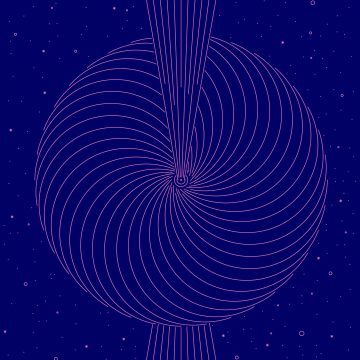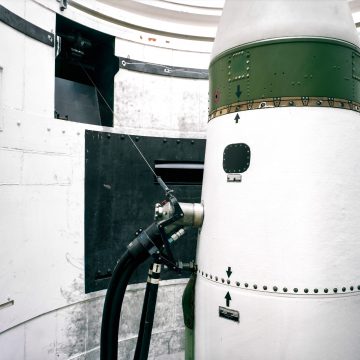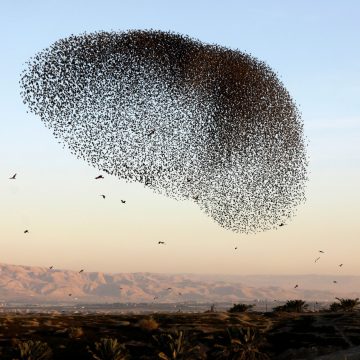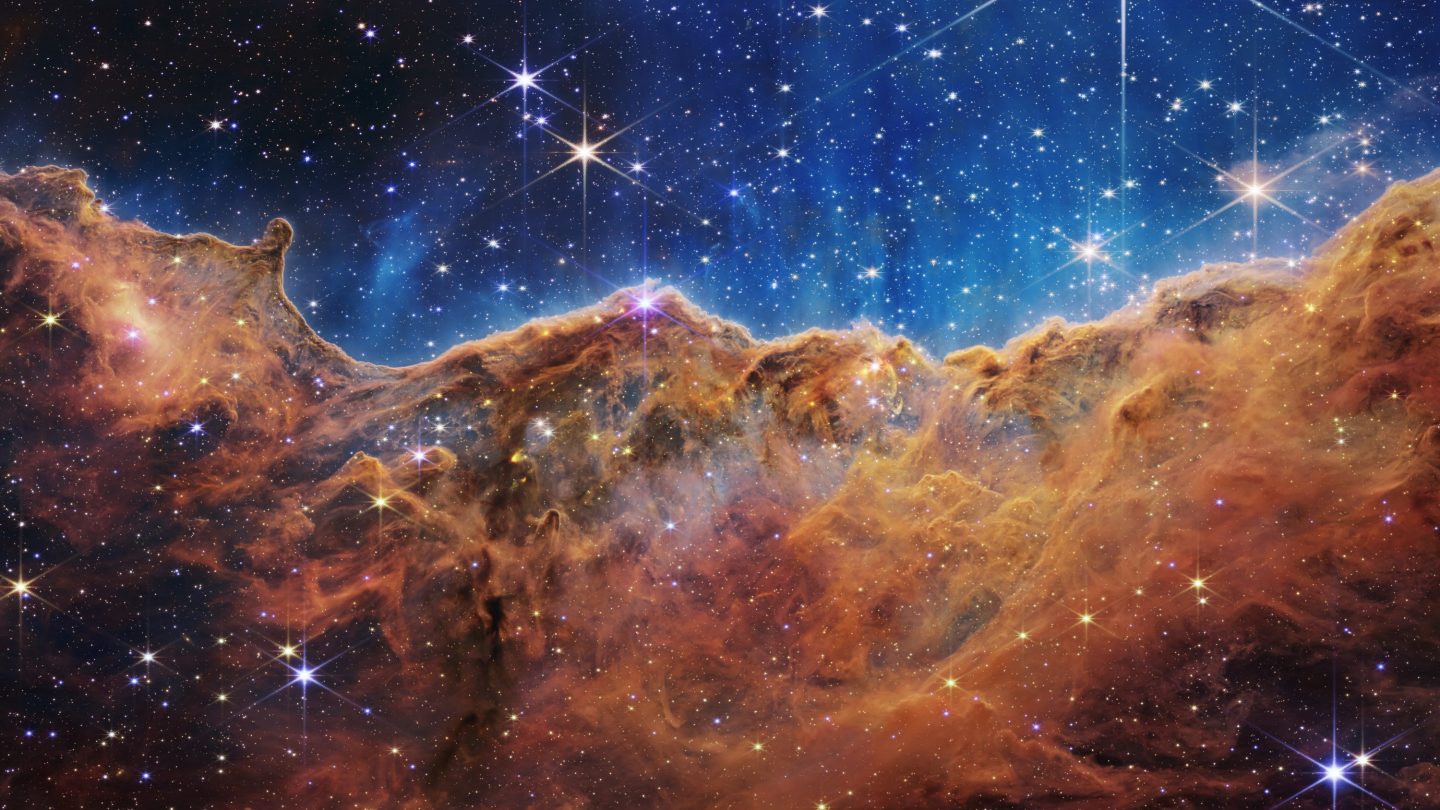
Out of this world
Want to know the meaning of life, the universe and everything? The Leverhulme Centre for Life in the Universe might just have the answer to the biggest questions.
These days, we have a pretty decent understanding of the functions of life, but when it comes to understanding how it started, we know almost nothing,” says Nobel Prize-winning astrophysicist Didier Queloz, the Jacksonian Professor of Natural Philosophy. “It’s like having a car and knowing how to drive it, how to steer, how to brake, maybe how to do some repairs, but you don’t know how to make it. That’s the situation we are trying to solve. But we’re not dealing with a car engine – we’re trying to develop a rational, fact-based approach to something that’s incredibly profound.”
The answer? The Leverhulme Centre for Life in the Universe, the result of a major grant of £10m over 10 years. It’s based at Cambridge, and will collaborate with institutions around the world, including ETH Zurich, Harvard University and the Centre of Theological Inquiry in Princeton, New Jersey. And critically, seeking to understand our place in the cosmos will be putting physicists, chemists and astrobiologists in dialogue with philosophers, theologians and pure mathematicians.
“This enquiry is something that’s ancient,” says Queloz. “If you go back to the history books, there’s a lovely quote from Epicurus, from 300 BCE: ‘The worlds also are infinite, whether they resemble this one of ours or whether they are different from it.’ The idea that we are one among many, and that there will be many of us, was already on the table. And this idea makes sense because it’s clear it is connected to our place in the universe. All through history, all these revolutions in thought have been about trying to place us into context.”
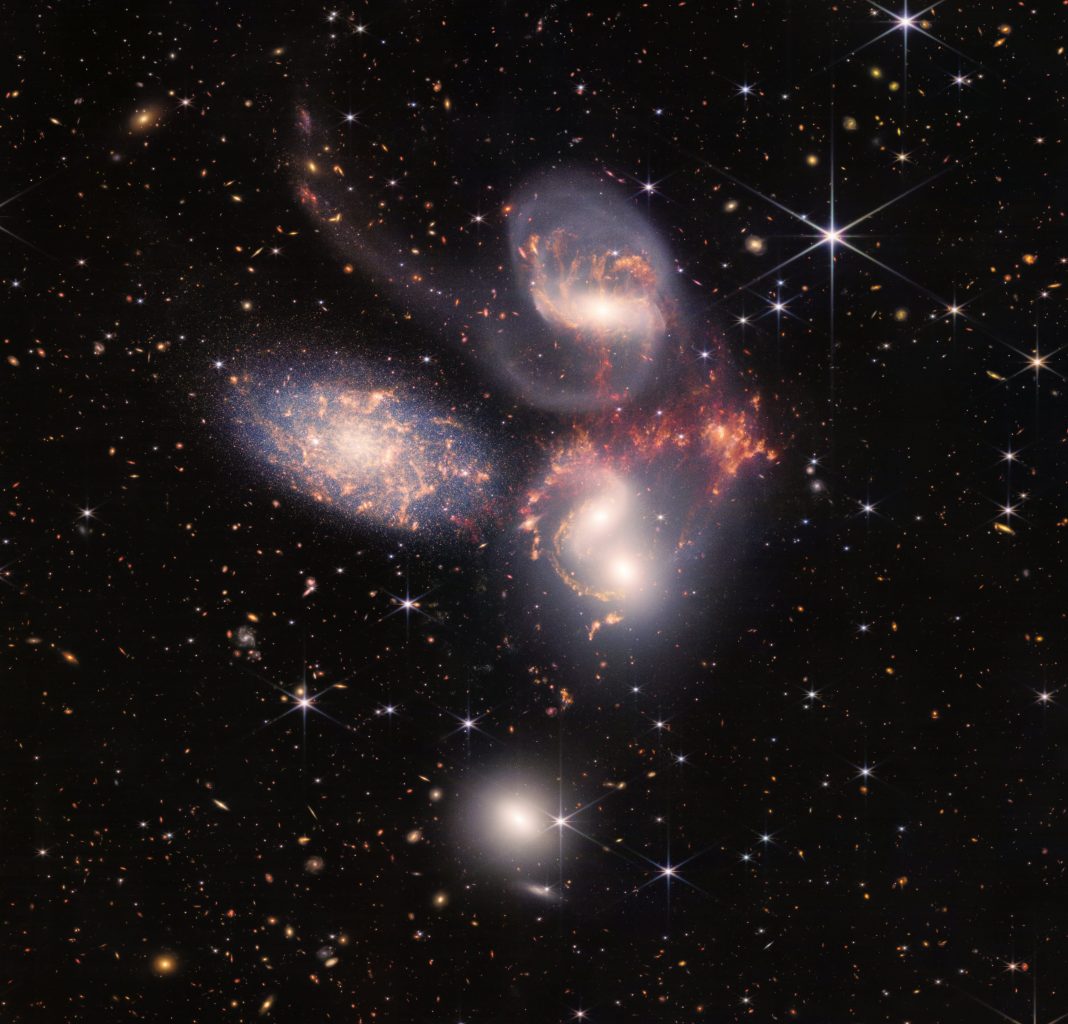
A visual grouping of five galaxies, of which four form the first compact galaxy group ever discovered. Using its Mid Infrared Instrument (MIRI), the James Webb Space Telescope offers new insights into galaxy evolution.
NASA, ESA, CSA, STScI
“There was already collaboration between the University’s two schools of Physical Sciences and Biological Sciences, but someone had heard there was a person in Arts and Humanities who was working on this question,” says the Starbridge Associate Professor in Theology and Natural Science, Reverend Dr Andrew Davison – a man whose intriguing job reflects a quirky career. “I was invited to a lunch at Trinity and Didier had cordoned off a space where we could all sit in a gaggle and talk. We all recognised we had to get people talking to one another, asking questions and having a cross-fertilisation of ideas that hadn’t been happening up until then.”
Davison, whose first doctorate was in Biochemistry before becoming a theologian, recently garnered global coverage when he shared details of his participation in a NASA sponsored programme debating the societal implications of finding life elsewhere in the universe. (“Heavens above: NASA enlists priest to prepare for an alien discovery” was one excitable headline in The Times).
The result of that initial sharing of ideas – and many subsequent conversations – has shaped the Leverhulme Centre’s focus. The team will examine four key questions: what are the chemical pathways that led to the origins of life? How can we characterise environments on the Earth or other planets that could have acted as the cradle for prebiotic chemistry and for life? What observational facilities and methods will enable investigation of bodies beyond the solar system? And how can philosophical and mathematical concepts refine understanding of what is meant by ‘life’?
Scientific research on life requires a deep understanding not only of what life is, but what it can be. We need to expand our intellectual horizons
Of course, the marriage of philosophy and mathematics with science is an ancient partnership. “Reflection on human life is a crucial feature of human scholarship throughout the centuries,” says Queloz. “It is, in essence, what makes us human in the first place. So scientific research on life requires a deep understanding not only of what life is, but what it can be. We need to expand our intellectual horizons.”
Davison agrees. “Those of us involved from Arts and Humanities want to look at the concepts the scientists are using and then consider what philosophical and other humanities disciplines have got to offer that might constructively disorientate, reorientate or excavate what some of those ideas mean,” he says. “That might then offer new ways of conceptualising some of the scientific problems and questions.”
The obvious question is: what is life? “It’s not like that has ever been the sole purview of the natural sciences,” says Davison. “Novelists, poets, painters and dramatists are interested in the nature of life. Philosophers and theologians are, too. So our goal with the new Centre is to go further than that. For example, what do we even mean when we talk about an ‘origin’? What do we mean when we talk about a ‘pathway’? By considering some of these categories from new angles, can we open up new ways of thinking?”
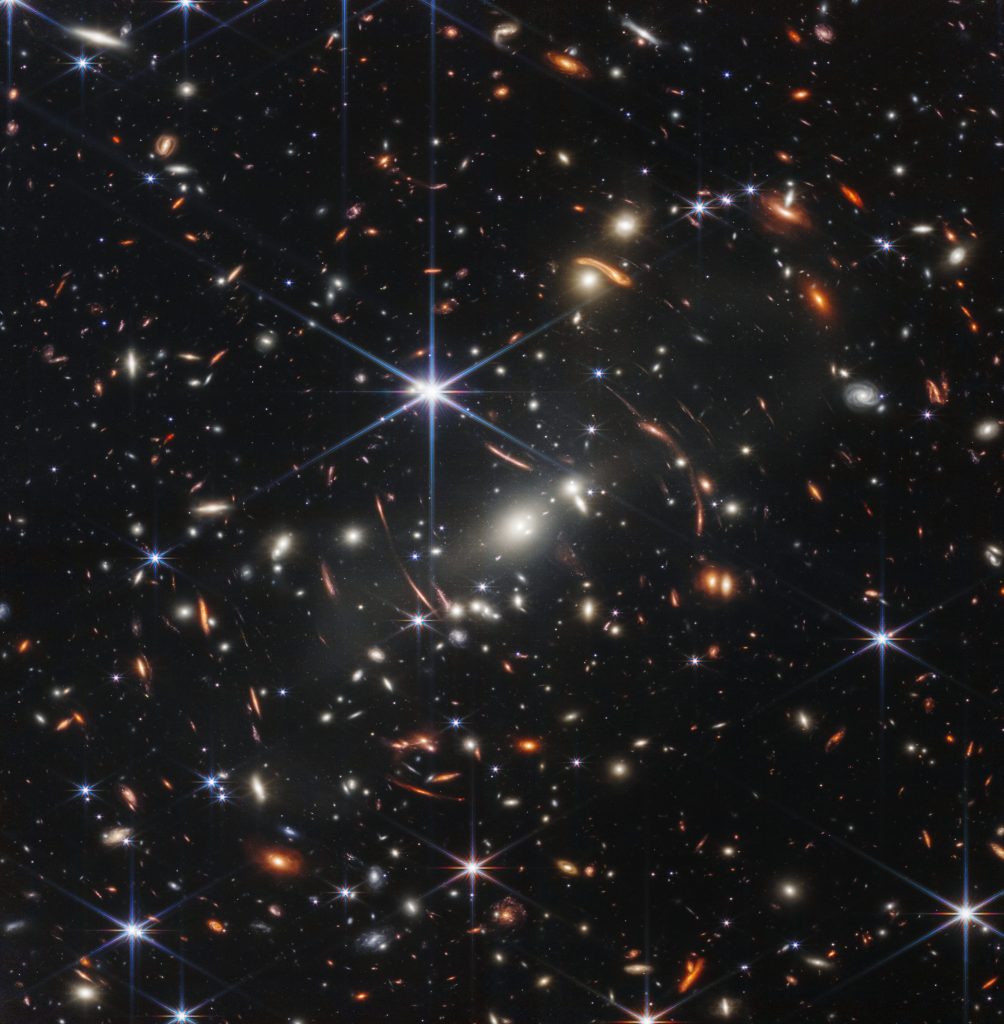
The first operational image taken by the James Webb Space Telescope, the deep-field photo shows a cluster of thousands of galaxies in the constellation of Volans. It is the highest-resolution image of the early universe ever taken.
NASA, ESA, CSA, STScI
The science is accelerating fast. Recent breakthroughs and current research are redrawing the boundaries of what we know. Queloz was at the forefront of that acceleration when, in 1995 and still only in his 20s, he and Michel Mayor discovered the first exoplanet orbiting a sun-like star – for which the pair received the Nobel Prize in Physics in 2019.
“Most of the media questions we had at the time were: ‘Is there life on that planet?’,” Queloz recalls. Today, there are more than 5,000 such planets known in nearly 4,000 distinct planetary systems – most discovered by NASA’s Kepler Space Telescope, now retired.
One of Kepler’s most remarkable successors is the James Webb Space Telescope, launched in December 2021, whose first images have already changed how we see the cosmos. The telescope is able to peer ‘back in time’, capturing light that’s more than 13 billion years old – and the resulting images include views of some galaxies formed merely a few hundred million years after the Big Bang. And the current Perseverance mission to Mars is discovering geological records that will shed light on whether the processes that made life possible on Earth might be viable elsewhere.
Any discovery of evidence of life elsewhere in the universe will have great impact upon how we understand our own place in that universe
Amid all these advances, the purpose of the new Cambridge Leverhulme Centre is not to “do the science, but to enable the science”, as Queloz puts it. “It’s to ask if we can all learn something new together; if we can develop a new way of thinking. Its purpose is to help us all uncover something we would not have thought of alone.”
Those questions fielded by Queloz 25 years ago about life on distant planets haven’t gone away. But in the future, they’ll be answered not only by physicists such as him, but by theologians such as Davison. “Any discovery of evidence of life elsewhere in the universe will have great impact upon how we understand our own place in that universe,” he explains. “And most of the world’s population will orientate their response to that big question within the framework of one world faith or another.
“My work has been to say: ‘Let’s try and get ourselves as prepared as possible for that; how can we have thought through some of the implications in advance’, so that if the news breaks tomorrow we’re not going from a cold start.”
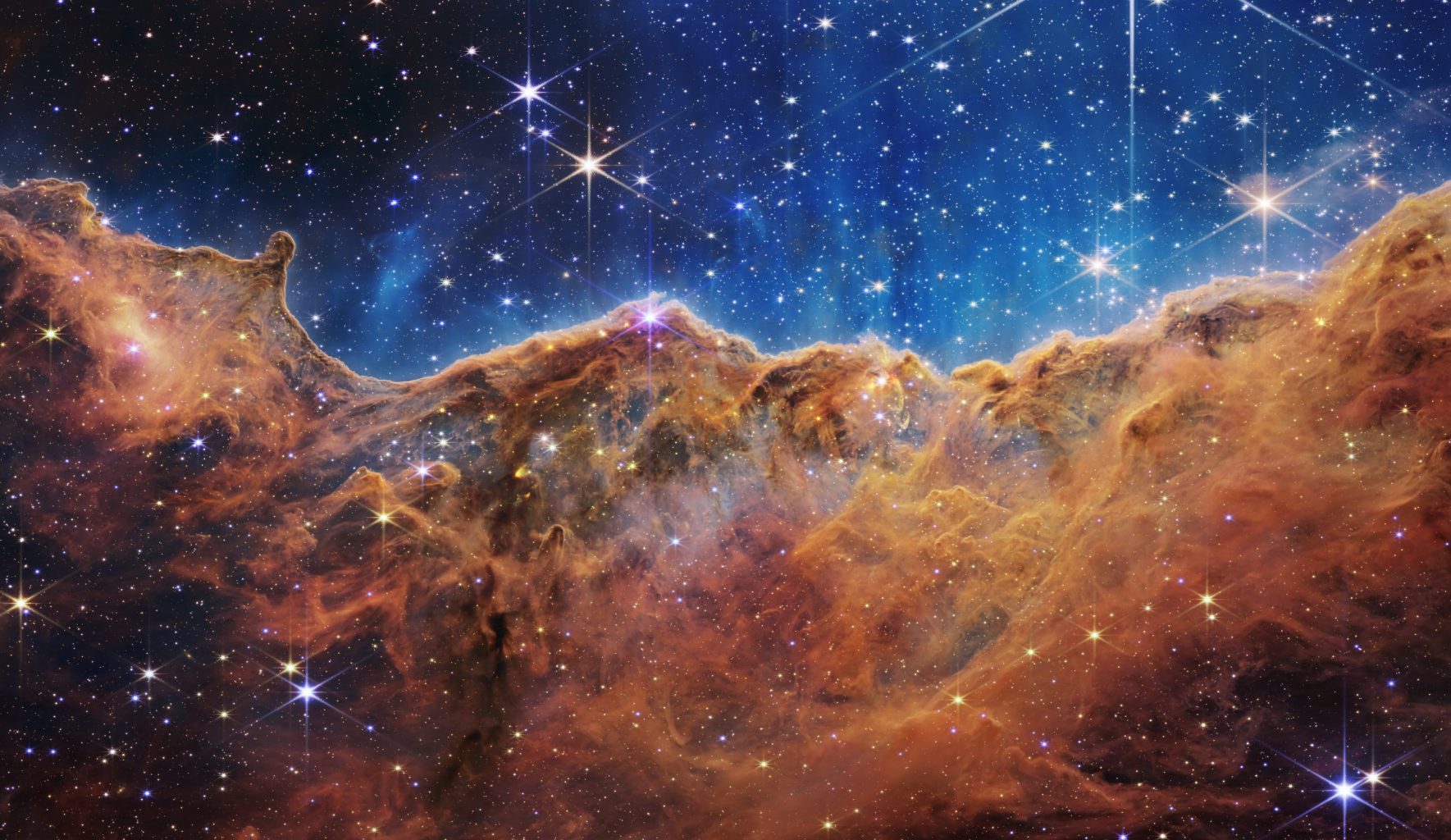
An open cluster of stars in the southern constellation, Carina, located 9,000 light years from Earth. The cloud-like structure of the nebula along the bottom contains ridges, peaks and valleys – very similar to a mountain range.
NASA, ESA, CSA, STScI
While such questions might appear framed by the notion of intelligent, or at least sentient life, the focus of the Centre is at the far opposite end of the biological spectrum – on the emergence of the first cell, what Davison calls “the transition out of the non-living into the living”. And here is where the Arts and Humanities collaborators in the Centre aim to offer one of those fundamental re-evaluations of scientific definitions. “As the scientists plot the stages of this journey into ‘aliveness’, some of the other scholars involved are looking to interrogate what ‘aliveness’ is,” says Davison.
“The mathematics of ordering can help us think about how we measure that transition,” he continues. “The concept of ‘aliveness’ can draw fruitfully on mathematical measurement theory. It can draw on deep historical ideas about analogy – how you stretch words to cover more than one thing. In theology, Thomas Aquinas discusses what it means for water to be ‘living’, for instance. We’re talking about really big, blue-sky questions.”
“The vision is ambitious and long-scale”
Fittingly for an institution that questions and problematises definitions, the new Centre will not have a physical, bricks-and-mortar existence. Instead, it will fund PhD students, postdocs, senior fellows, visiting researchers and a series of collaborations. Currently in planning is a new MPhil course about life in the universe, to train the next generation of scientists. “The vision is ambitious and long-scale,” says Queloz.
And the Centre aims not merely to facilitate invigorating – potentially revolutionary – debate between scientists and their humanities counterparts: at the heart of its mission is communication with the public, “because we’re very aware that trying to understand the origin of life touches something related to the true meaning of life,” says Queloz. “The impact of scientific research on society is enormous, and exactly what will be done with what we learn is up to future generations. But the question of life’s origins brings more than simply knowledge. It touches on profound spiritual elements of: ‘Why life?’; ‘What is the purpose of life?’; and ‘What is the future of life?’
“For the whole history of mankind, literature, culture and art have addressed these questions. We at the new Leverhulme Centre for Life in the Universe believe that combining the arts and sciences has to be part of our fresh way of thinking.”
Find out more about the Leverhulme Centre for Life in the Universe.

